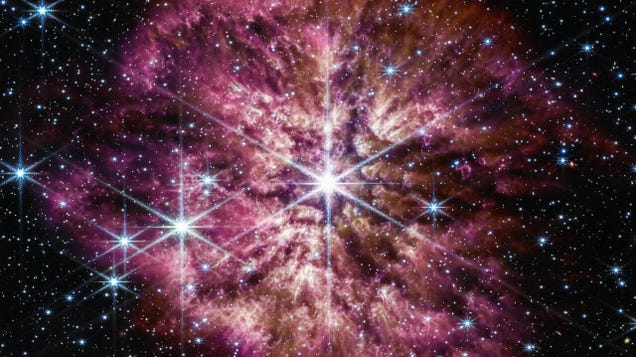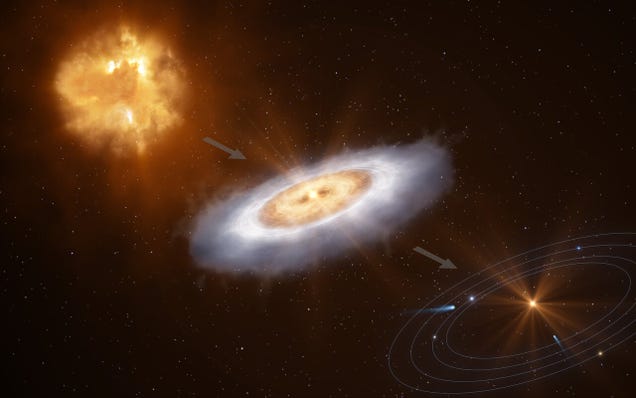K. Miller/R. Hurt (Caltech/IPAC
Lia Medeiros via The Associated Press
NASA/Flickr

In a bid to understand even more about our mysterious and massive universe, NASA is partnering with the Department of Energy on an ambitious lunar project.

The Webb Space Telescope has produced a stupendous view of a Wolf-Rayet star, an extraordinarily bright object in the sky that (you may want to sit down) will soon die.
NASA/ESA/Pieter van Dokkum et al./Astrophysical Journal Letters 2023

Researchers studying a distant star forming within a dusty cloud have found an abundance of water in its immediate vicinity, which could have implications for the origins of the water in our own solar system.

Unprecedented access to space is leading to all sorts of cool new ideas, including the prospect of storing data on the lunar surface. Cloud computing startup Lonestar Data Holdings announced the results of its latest funding round, taking it one step closer to this very goal.
NASA/ESA/Kruk et al.

Researchers from the University of Arizona have developed a possible new way of scouting for real estate on other planets: tiny robots that drop digital breadcrumbs while exploring Martian caves. It’s a method ripped straight from folklore.
